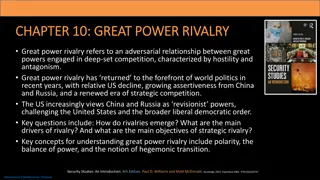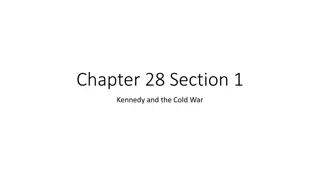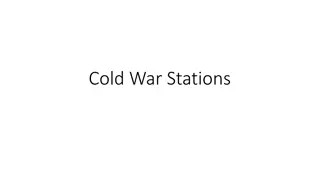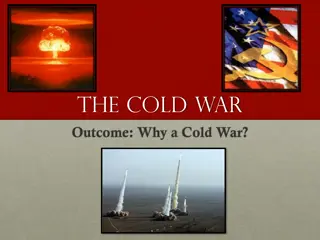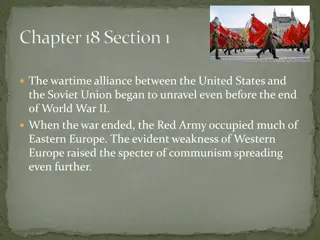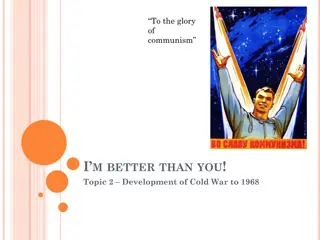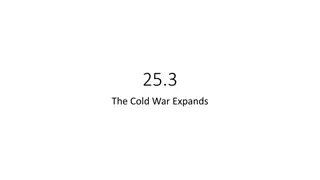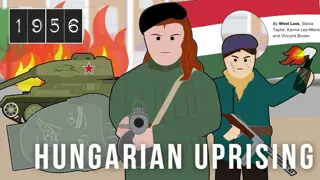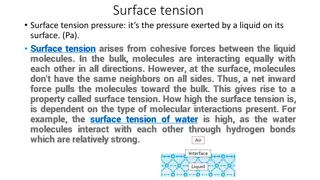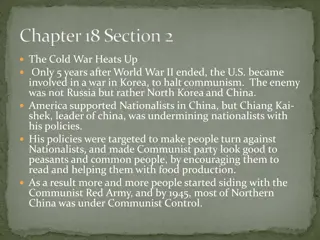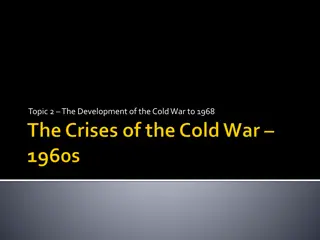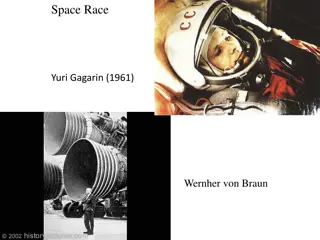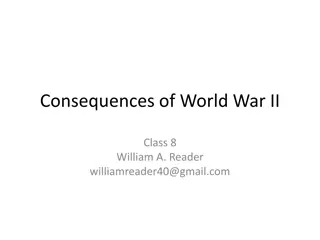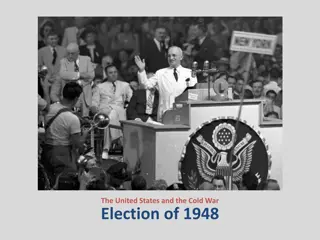The Cold War: Rivalry and Tension Between Superpowers
The Cold War, lasting from post-World War II to the 1980s, was defined by political tension and rivalry between the United States and the Soviet Union. Despite never engaging in direct military combat, both sides competed through political maneuvering and propaganda, impacting global conflicts and the space race. The ideological clash between communism and capitalism, combined with totalitarian governance in the Soviet Union, fueled suspicion and division. The legacy of the Cold War lingers, shaping the second half of the 20th century and reverberating into the present day.
Download Presentation

Please find below an Image/Link to download the presentation.
The content on the website is provided AS IS for your information and personal use only. It may not be sold, licensed, or shared on other websites without obtaining consent from the author. Download presentation by click this link. If you encounter any issues during the download, it is possible that the publisher has removed the file from their server.
E N D
Presentation Transcript
The era known as the Cold War lasted roughly from the close of World War II until the end of the 1980s. Rather than military combat, rivalry and political tension between the United States and the Soviet Union defined the period. Though at various times it appeared that the Cold War might turn hot, the two sides never actually fought one another; to do so would have risked nuclear war.
Each side instead sought to thwart the other using political methods or propaganda. For example, in various conflicts around the world (including Korea, Vietnam, and Afghanistan) both sides backed governments that had similar political aims to themselves. In addition, each side looked to better the other in the space race.
Though the Cold War lasted less than 50 years, it cast a shadow over the second half of the 20th century and left a legacy that can still be felt today.
Although the U.S. and Soviet Union had worked in common cause during World War II, several issues eventually turned the onetime allies into bitter rivals. While the United States was built on free enterprise and had a capitalist economy, the Soviets favoured communism, in which the central government controlled all property and economic policy.
Communism versus capitalism In your books, draw up a table Communism Capitalism Watch the following link and list the differences between the two ideologies http://www.youtube.com/watch?v=B3u4EFTwprM https://www.youtube.com/watch?v=WQY15ybu3Ns
In addition, the Soviet Union was as much a totalitarian state as the nations the Allies had fought during the war. The Soviet government officially recognized only the Communist Party and routinely silenced opposition parties. Finally, ever since the 1917 Russian Revolution the basic clash between communism and capitalism had made both nations highly suspicious of one another. These tensions only increased after the defeat of Nazi Germany: without a common enemy to hold them together, the alliance between the U.S. and USSR quickly vanished.
British Prime Minister Winston Churchill, U.S. President Franklin D. Roosevelt, and Soviet Premier Josef Stalin conferred at the February 1945 Yalta Conference, which created the United Nations and also set the stage for Cold War. Yalta marked the final meeting of the World War II era Big Three. Roosevelt, already in poor health, died two months after the conference. Later that summer, Churchill s Conservative Party lost the British parliamentary elections, and Clement Attlee of the Labour Party replaced him as prime minister.


